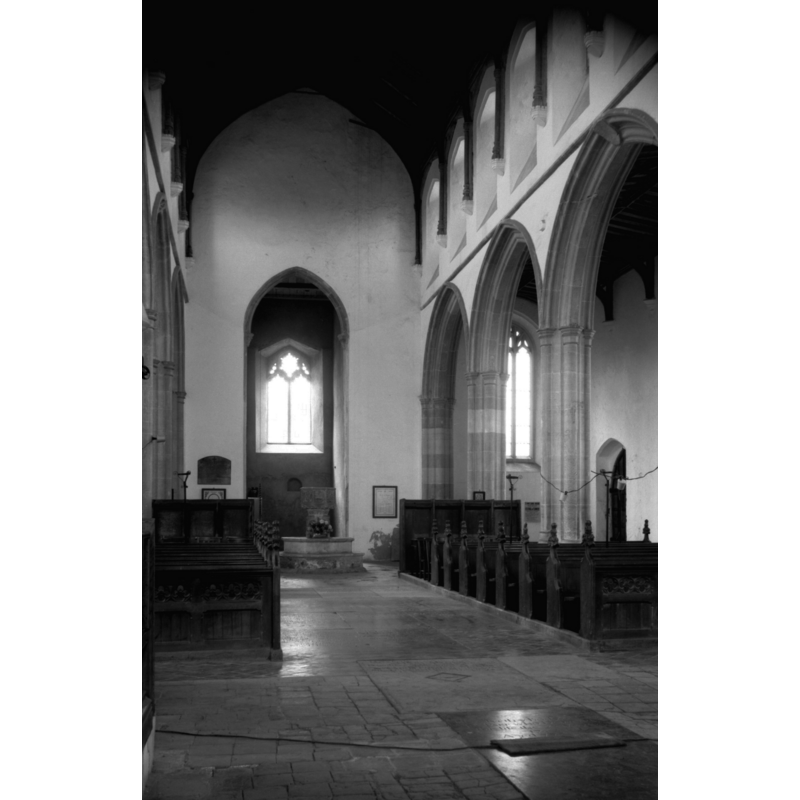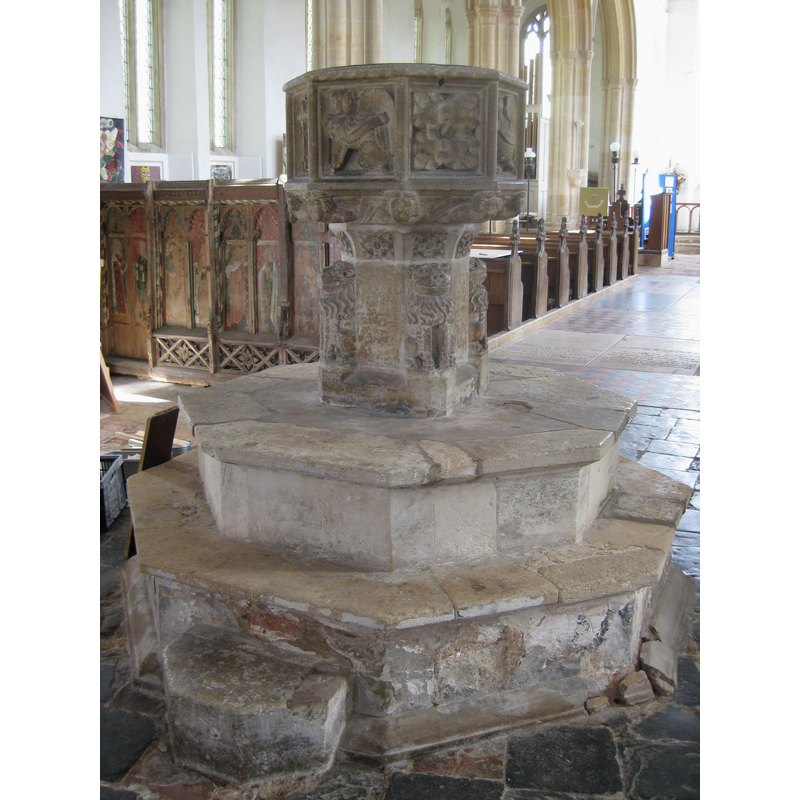Salthouse / Salhus / Salthus
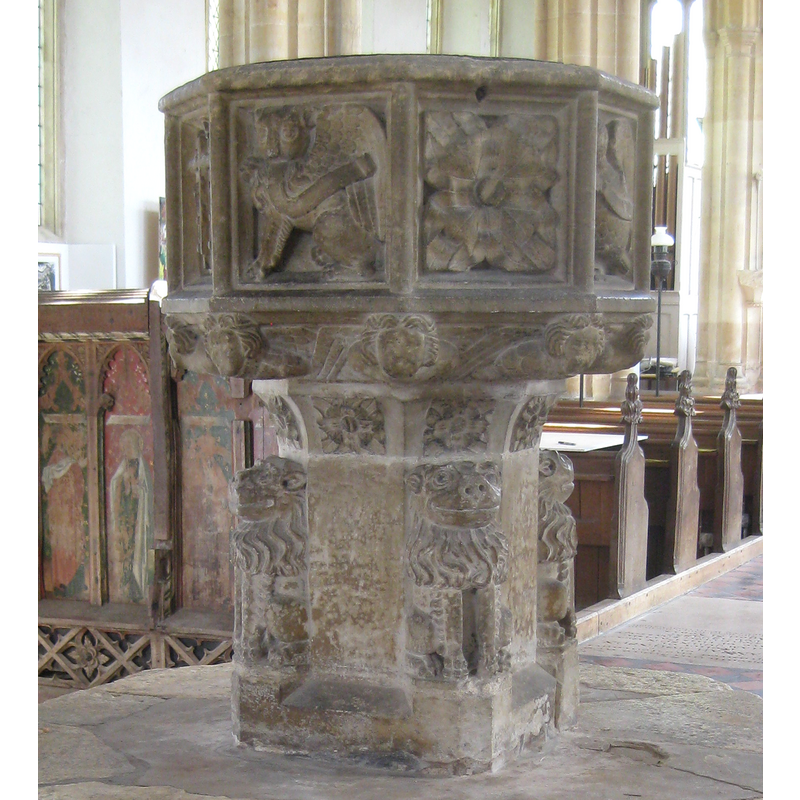
Image copyright © Janice Tostevin, 2009
Standing permission
Results: 19 records
B01: design element - motifs - floral - rose
B02: Apostle or saint - Evangelists - St. Matthew - symbol - angel - with scroll
B03: symbol - shield - emblem - the instruments of the Passion - cross, scourges, nails
B04: Apostle or saint - Evangelists - St. Mark - symbol - winged lion - with scroll
B05: design element - motifs - floral - rose
B06: Apostle or saint - Evangelists - St. John - symbol - eagle - with scroll
B07: symbol - shield - emblem - the instruments of the Passion - crown of thorns, hammer, lance, pincers, sponge, etc.
B08: Apostle or saint - Evangelists - St. Luke - symbol - winged bull - with scroll
UB01: animal - mammal - lion - sejant
UB02: animal - mammal - lion - sejant
UB03: animal - mammal - lion - sejant
UB04: animal - mammal - lion - sejant
angel - head - 8
design element - motifs - floral - flower - 8
view of church exterior - southwest view
Scene Description: N/A
Photo caption: "Panels of screen at west end of church"
Copyright Statement: Image copyright © George Plunkett, 2014
Image Source: B&W photograph taken 17 July 1976 by George Plunkett [www.georgeplunkett.co.uk/Norfolk/S/Salthouse St Nicholas' church from SW [5596] 1976-07-17.jpg] [accessed 29 January 2014]
Copyright Instructions: Standing permission by Jonathan Plunkett
view of church interior - chancel - rood-screen, choir-screen; iconostasis
Scene Description: Photo caption: "Panels of screen at west end of church" [NB: the chancel screen was moved to the west end in the 1930s [cf. FontNotes]]
Copyright Statement: Image copyright © George Plunkett, 2014
Image Source: B&W photograph taken 17 July 1976 by George Plunkett [www.georgeplunkett.co.uk/Norfolk/S/Salthouse St Nicholas' church screen south [5595] 1976-07-17.jpg] [accessed 29 January 2014]
Copyright Instructions: Standing permission by Jonathan Plunkett
view of church interior - nave - looking west
Scene Description: Photo caption: "15c arcades"
Copyright Statement: Image copyright © George Plunkett, 2014
Image Source: B&W photograph taken 17 July 1976 by George Plunkett [www.georgeplunkett.co.uk/Norfolk/S/Salthouse St Nicholas' church interior west [5594] 1976-07-17.jpg] [accessed 29 January 2014]
Copyright Instructions: Standing permission by Jonathan Plunkett
view of font
INFORMATION
FontID: 01666SAL
Object Type: Baptismal Font1
Church/Chapel: Parish Church of St. Nicholas
Church Patron Saints: St. Nicholas of Myra
Church Location: Grouts Lane, Salthouse, Norfolk NR25 7XA
Country Name: England
Location: Norfolk, East Anglia
Directions to Site: Located on the A149, N of Holt
Ecclesiastic Region: Diocese of Norwich
Historical Region: Hundred of Holt [formerly in the Hundred of North Erpingham]
Font Location in Church: Inside the church, at the W end of the nave
Century and Period: 15th century (late?), Perpendicular
Workshop/Group/Artisan: East Anglia font / Evangelists' font / heraldic font
Credit and Acknowledgements: We are grateful to Janice Tostevin for her photographs of this font; we are also grateful to Jonathan Plunkett for the photographs of this church taken by his father, George Plunkett, in July 1976
Font Notes:
Click to view
There are two entries for Salthouse [variant spelling] in the Domesday survey [http://domesdaymap.co.uk/place/TG0743/salthouse/], neither of which mentions a church or cleric in it [NB: this source places it in the hundred of North Erpingham, which was the unit it belonged to at the time of the survey; later in the hundred of Holt]. Blomefield (1805-1810) writes: "The family of De Kelling, who held the principal lordship of Kellig under Hugh Earl of Chester, (and which extended into Salthouse,) held that also, and so were patrons of the churches belonging to the said towns." If this Hugh were the 1st Earl of Chester [i.e., the 2nd, since the original first earl, Gerbod of Oosterzele, was given up by William the Conqueror, who gave the earldom to Hugh (+1101)]. If this Hugh was the patron of Salthouse's church, it would put the founding of this church between 1086 and 1101. The present church, however, is of a much later date, as Blomefield (ibid.) notes: "The Church of Salthouse is a rectory, dedicated to St. Nicholas [...] The present church was built by Sir Henry Heydon in the beginning of the reign of Henry VII" [i.e., 1485+]. Blomefield (ibid.) notes several events related to the earlier church and its advowson and patronage, and reports: "Robert de Salthouse occurs rector in 1266" [i.e., first recorded rector]. The emblems on the sides of the basin of the present font are described in Farrer (1887 [1885?]): "On the Font: VIII. Spear and reed with sponge in saltire ; in chief a crown of thorns, in base a pot, on either side hammer and pincers. Shield of the Passion. -- IX. A cross between in chief three nails, and in base two whips. Shield of the Passion." Noted in Cox & Harvey (1907) as a Perpendicular font with symbols of the Passion and of the four Evangelists alternatively on the basin panels [NB: not quite accurate -- cf. infra]. Noted and illustrated in Knott (2004), who comments on the friendly lions of the base, and on the chancel screen oddly located at the west end of the nave: "Most of the screen was moved to the back of the church in the 1930s, which is liturgically ignorant, but makes it easy to study. Given this, it is curious that Pevsner and his later editor Bill Wilson misinterpreted it, recording it as bearing 'sixteen Saints'. MR James and Mortlock both hedge their bets and identify a few Saints who are holding their familiar symbols, but the reason that they were unable to identify the others is that they are not Saints at all. The figures are in pairs, and those on the left hand side of each pair on the south side (right hand figure of each pair on the north) are clearly identifiable as Saints, mainly disciples: St Andrew with his saltire cross on the first panel of the south side, for example, and St James with his pilgrim staff as the left hand figure in the next pair to the south. Intuitively, they should all be disciples, but one Saint, on the north side, appears to wear a crown, and carries a spear and sack. Who could this be? The other figures in each pair are quite different. They don't have halos, and they are dressed in 15th century clothes. In attitude, most are arranged to face their partnering Saint. They also have symbols of a kind, but more subtly; one holds a scroll, another a sack, a third counts on his fingers. So, who are they? I think they are donors. They are the living, breathing citizens of Salthouse in the 15th century who paid for this place to be built. Perhaps Pevsner can be forgiven for his confusion; perhaps it was a bleak winter's day when he came here. However, one portion of the screen, still up in the chancel, is much easier to decipher, being much less damaged. This consists of two pairs of figures, a Saint and a donor in each case again. The Saints are probably St Jude (with a halberd, although he may appear on the screen at the back with his boat) and St Simon (with a fish). But the other two figures are wholly secular, and the left hand figure is a woman. And both of them are doing the same thing - carrying a purse and holding up a coin, which seems to be fairly conclusive. Assuming that the screen stretched right across the church, this must have been part of the parclose, perhaps to a chantry that remembered the souls of Sir Henry and Lady Heydon, who are generally credited with paying for the greater part of the rebuilding. So, perhaps this is them." The sides of the octagonal basin are decorated as indicated above, the Instruments of the Passion on two shields; two panels have large roses; the other four have the symbopls of the Evangelists; angels heads at the underbowl angles, rosettes on the chamfer below; the octagonal-to-square stem has sedente lions at the angles, but the usual buttresses are not at the sides, which are blank [now?] on this font.
COORDINATES
Church Latitude & Longitude Decimal: 52.950492, 1.088898
Church Latitude & Longitude DMS: 52° 57′ 1.77″ N, 1° 5′ 20.03″ E
UTM: 31U 371605 5868472
MEDIUM AND MEASUREMENTS
Material: stone, type unknown
Font Shape: octagonal (mounted)
Basin Interior Shape: round
Basin Exterior Shape: octagonal
REFERENCES
Blomefield, Francis, An essay towards a topographical history of Norfolk, 1805-1810
Cox, John Charles, English Church Furniture, New York: E.P. Dutton & Co., 1907
Farrer, Edmund, The Church Heraldry of Norfolk, a description of all coats of arms […] now to be found in the county […], Norwich: A.H. Goose and Co., 1885-1893
Knott, Simon, The Norfolk Churches Site, Simon Knott, 2004. [standing permission to reproduce images received from Simon (February 2005]. Accessed: 2009-07-02 00:00:00. URL: www.norfolkchurches.co.uk.
Pevsner, Nikolaus, Norfolk 1: Norwich and North-East [2nd ed.], Harmondsworth: Penguin Books, 1997
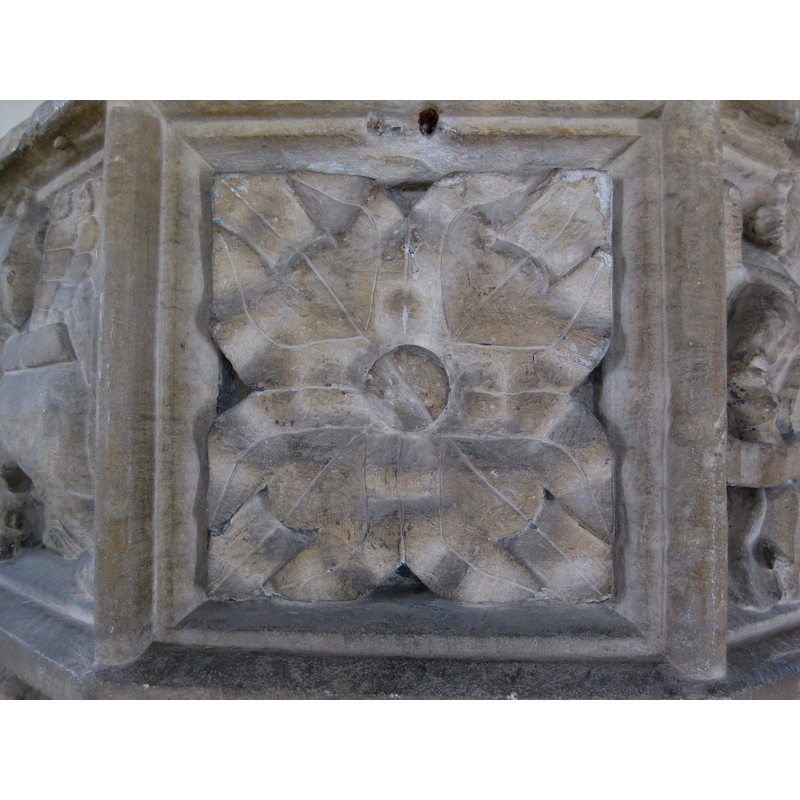
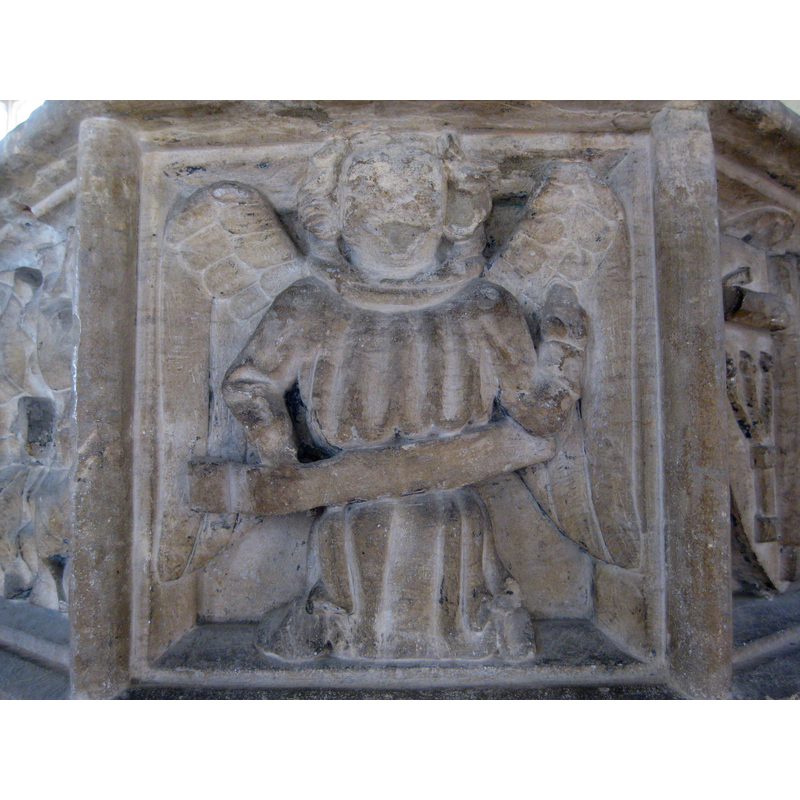
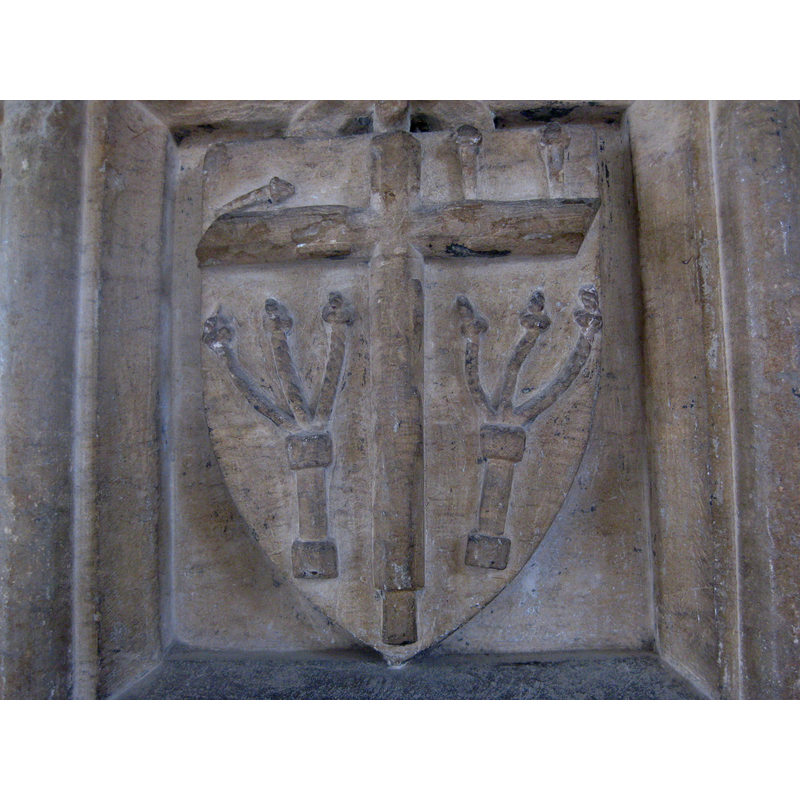
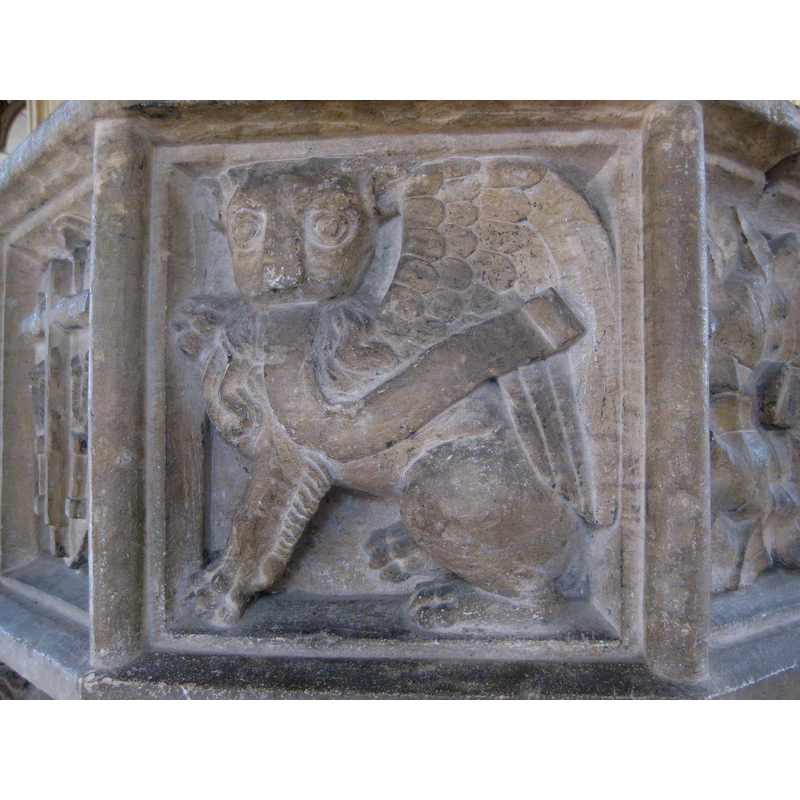
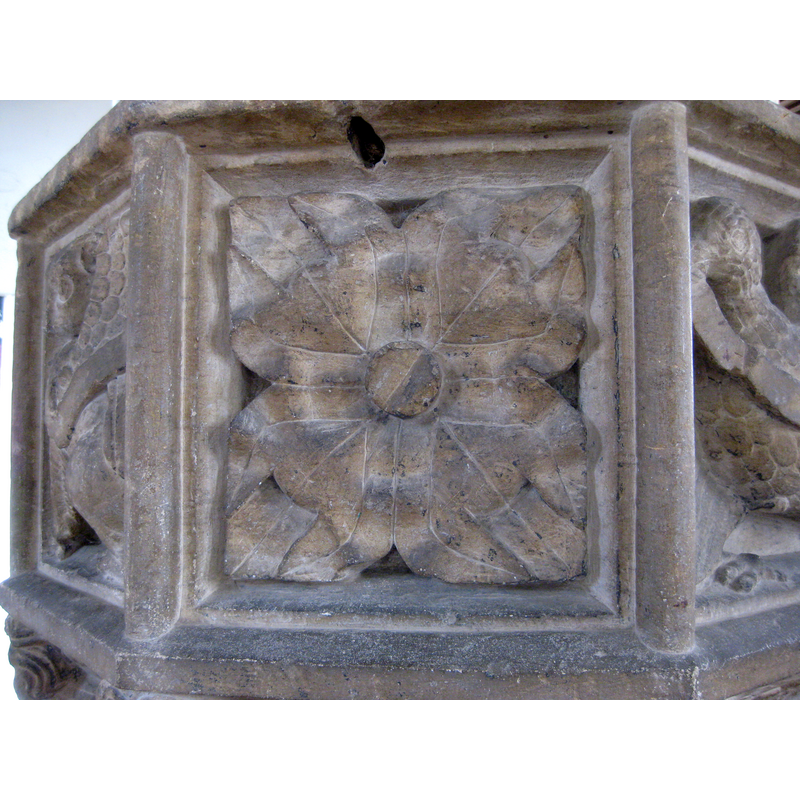
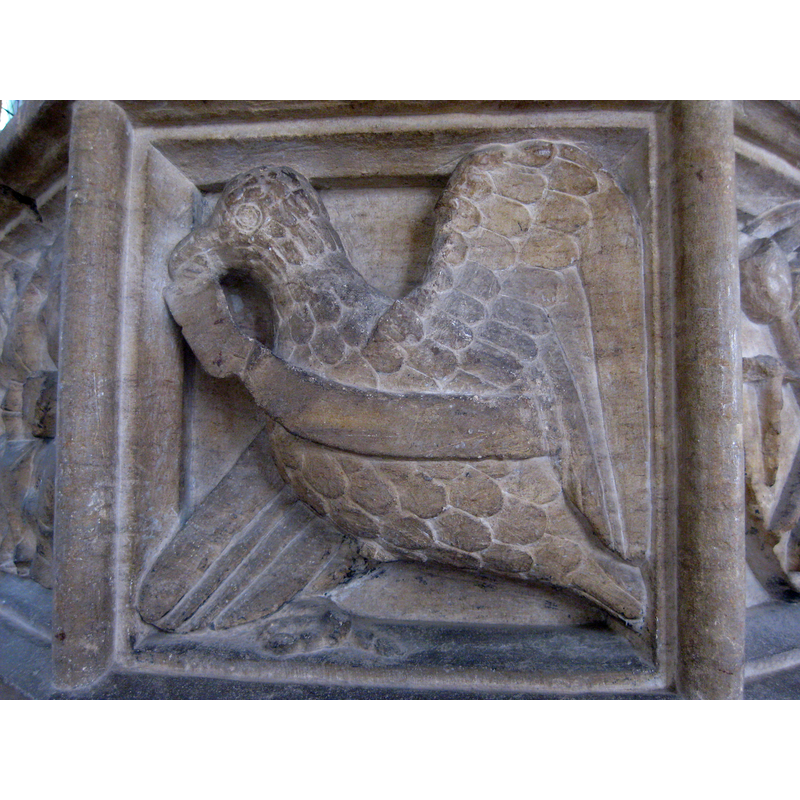
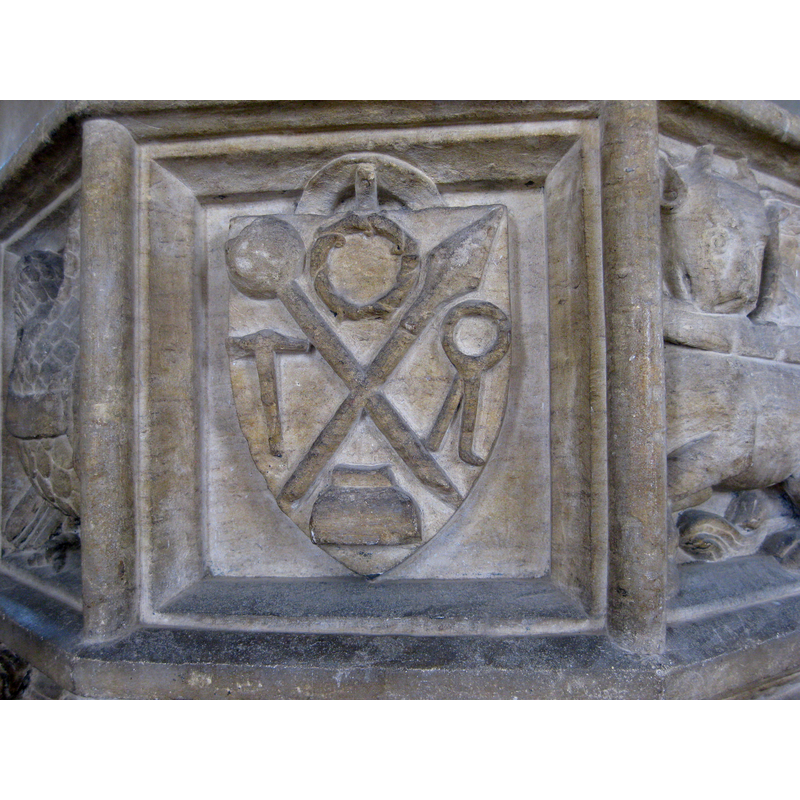
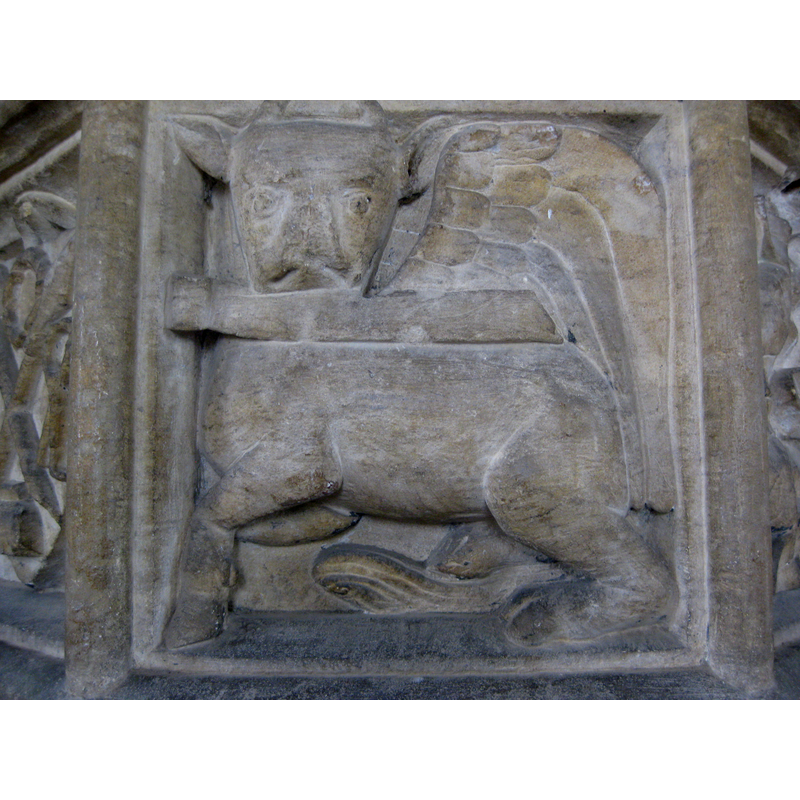


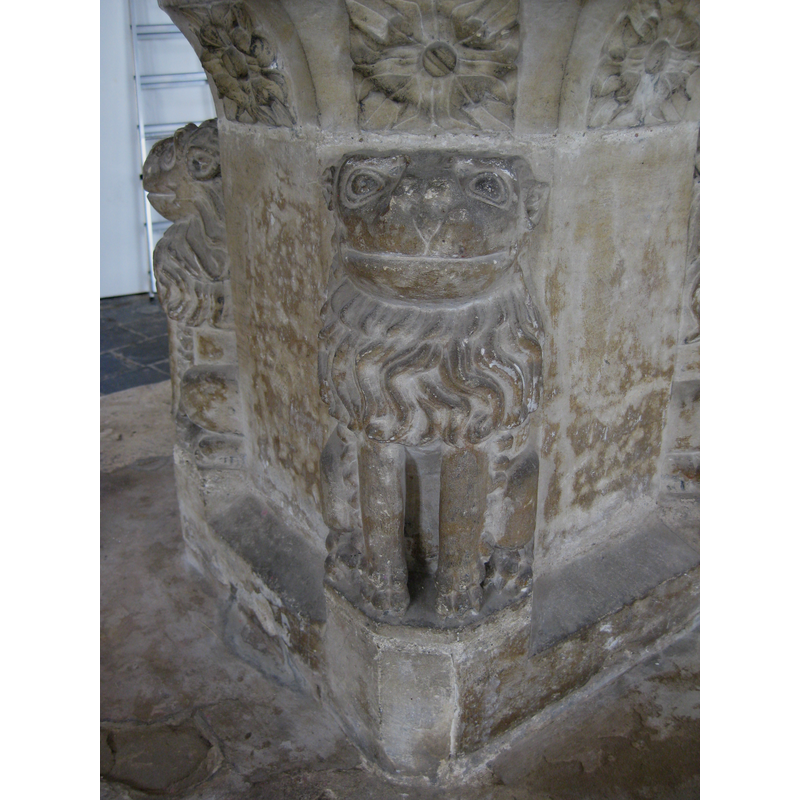
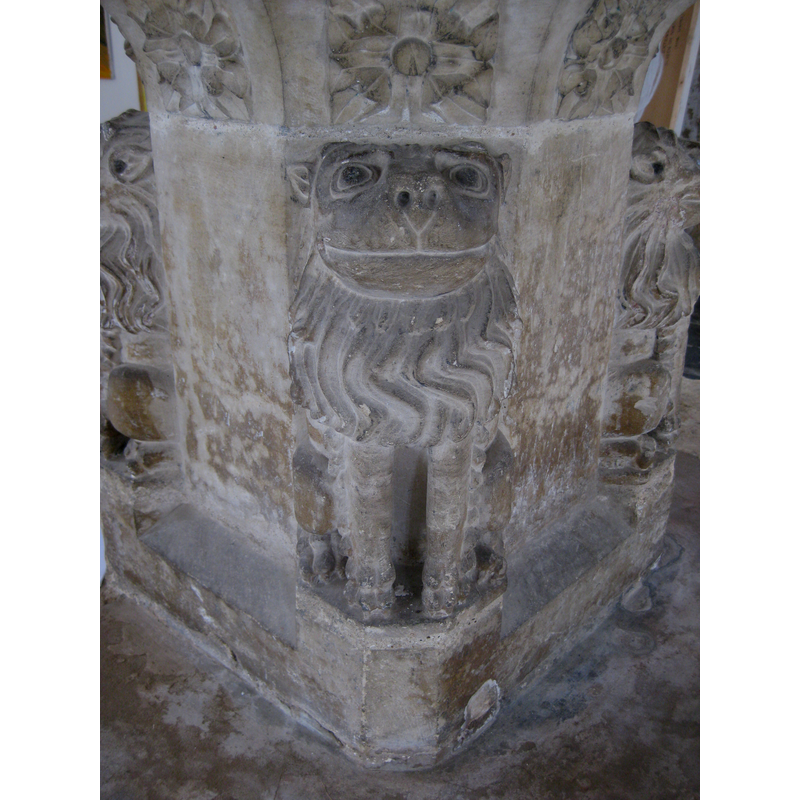
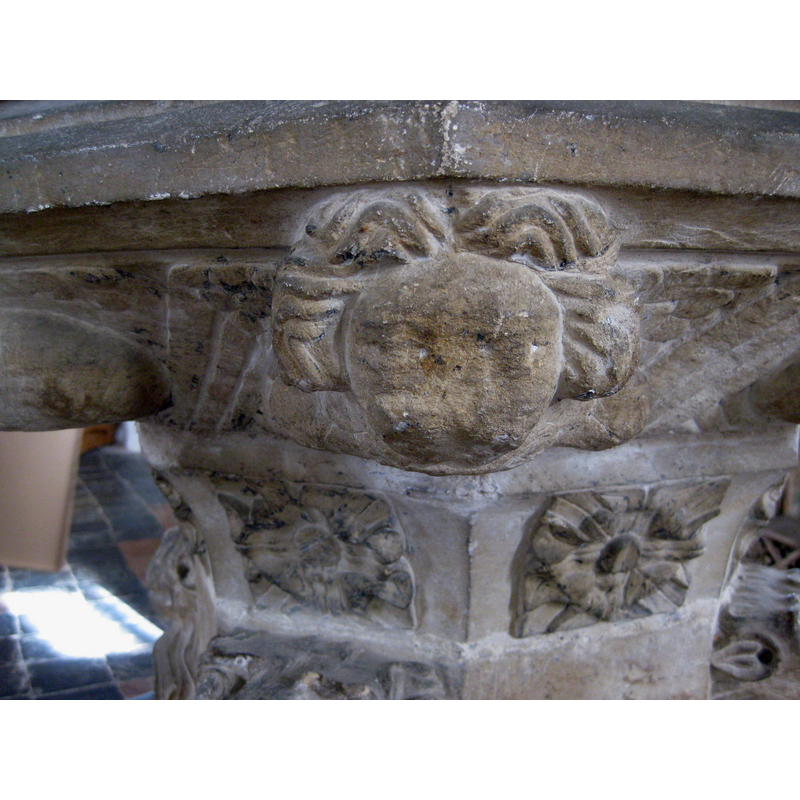

![Photo caption: "Panels of screen at west end of church" [NB: the chancel screen was moved to the west end in the 1930s [cf. FontNotes]]](/static-50478a99ec6f36a15d6234548c59f63da52304e5/compressed/1140129022_compressed.png)
